Search results for: Mckinsey 7s
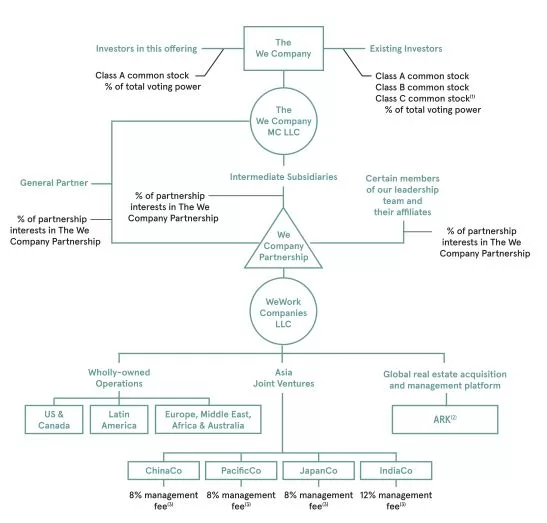
Under the leadership of co-founder and former CEO Adam Neumann WeWork organizational structure was complex. Figure 1 below is a ‘simplified’ version of WeWork organizational structure the company submitted for IPO Prospectus on August 2019. The structure fails to clearly illustrate the organization of the business from the viewpoint of who reports to whom. It also fails to clearly indicate the flow of information, an essential component of a good organizational structure. Figure 1 We Work organizational structure under Adam Neumann If this is a ‘simplified’ version, it would be safe to assume that the original version would be much more difficult to comprehend. Ineffective organizational structure is one of the main reasons why global flexible workspace provider faced near bankruptcy in 2019. After the departure of Adam Neumann, the new CEO Sandeep Mathrani restructured the business simplifying the organizational structure to a great extend with a clear pattern for information flow. Figure 2 Current pattern of WeWork organizational structure Organizational structure of WeWork can be classified as hierarchical. Such a structure offers advantages to the co-working giant such as creating a landscape for Sandeep Mathrani to turn around the business to make it suitable for long-term. Hierarchical structure offers clear delegation of authority and encourages specialization among employees at all levels. On the negative side, hierarchy can cause rivalries between various departments. It can also slow down the implementation of proposed changes through loss or misinterpretation of information along the hierarchy. The current organizational structure of WeWork may change in the foreseeable future because the structural changes by Mathrani are far from complete. Mathrani has predicted flexi-working revolution at a global scale[1] and he is striving WeWork to lead such a revolution. WeWork Inc. Report contains the above analysis of WeWork organizational structure. The report illustrates the…

WeWork leadership has been a controversial topic with co-founder and first CEO Adam Neumann being notorious for deceitful leadership style. In fact, leadership style at WeWork under Neumann is used as a case study in business schools worldwide for its inefficiency at various levels. The long list of wrongdoings by Neumann includes engaging in insider dealings, burning cash recklessly without a path to profitability, systematically exercising poor executive judgement and allowing discrimination and harassment at the workplace. Neumann had contemplated and it was written in initial company IPO filings that in case he died his wife Rebekah, the co-founder and the chief brand and impact officer of WeWork, would be responsible for appointing a successor. This scenario reminded some business analysts Game of Thrones show. Neumann also engaged in non-standard financial dealings that caused conflict of interest. For example, he was borrowing money from WeWork at a little or no interest to privately buy properties and then lease them to WeWork. Similarly, Neumann registered “The We Company” as a trademark under his name personally and sold it to WeWork for USD 6 million. Other unacceptable behaviours by Neumann include brining weed on a private jet, organizing notorious parties with free beer on tap and promoting the work culture of discrimination and sexism. These and other WeWork leadership issues emerged when the workspace provider was scrutinized when preparing for IPO in 2019 and the company had to delay the public listing until October 2021. Due to the mounting pressure from investors and other stakeholders following the revelations Adam Neumann had to resign on September 24, 2019. Co-CEOs Artie Minson and Sebastian Gunningham took over leadership at WeWork until Sandeep Mathrani became CEO in February 2020. Sandeep Mathrani has an impressive track record as turnaround master and he has led five different…
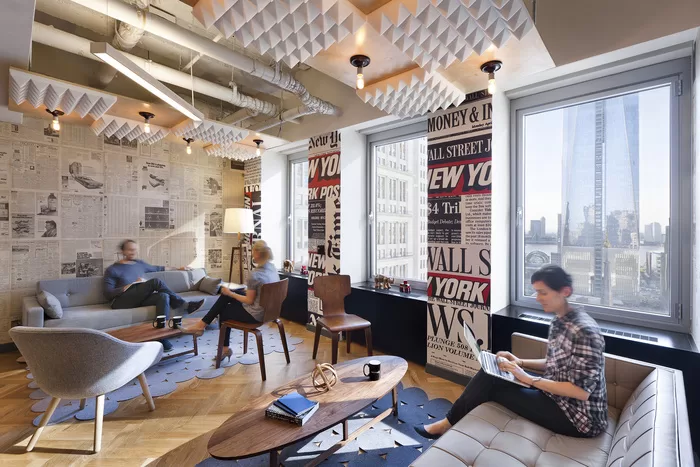
WeWork business strategy is based on the following two pillars: 1. Digitalizing real estate business. Co-founder and former CEO Adam Neumann attempted to position WeWork as a tech company and this fact is one of the main reasons the company has been able to attract billions of dollars from investors. Tech startups offer potential to generate massive return on investment due to innovative nature of their customer value proposition and scalability of the business with little additional cost. The workspace provider, on the other hand, does not have the same level of scalability, because in order to create each new workspace the company has to lease new office space from property owners. Realisation of this fact by stakeholders along with fundamental leadership mistakes by Adam Neumann caused the planned IPO to fail in 2019. The current CEO Sandeep Mathrani accepts that WeWork is a real estate company, but it also has advanced tech capabilities. The co-working giant has developed WeWork Workplace a software that allows employers manage their workers by booking conference rooms, coordinating desk usage and tracking which work spaces are used most often. Judging by the direction the global flexible workspace provider is moving we can say that WeWork pursues a business strategy of digitalizing the real estate business. 2. Offering space as a service. For centuries workspace was a product, where companies needed to purchase or lease an office. The concept space as a service developed about two decades ago changed the status quo. Space as a service offers users flexibility in terms of sizes of workspace and duration of service. Space as a service refers to living spaces as well, an area dominated by AirBnb. WeWork is a pioneer in space as a service for workspace and focusing on this concept as the core…
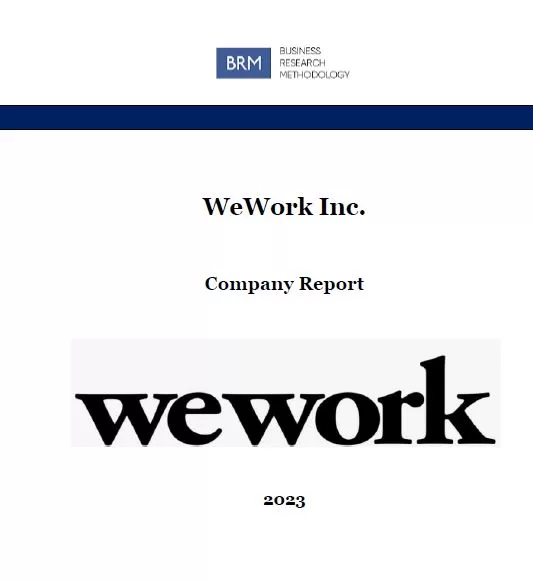
Founded in 2010 in Manhattan USA by Adam Neumann and Miguel McKelvey, WeWork Inc. is a global flexible workspace provider that comprises a network of 756 locations in 38 countries. The co-working giant has approximately 590 thousand physical memberships as of December 2021 (Annual Report, 2021). In the US in 2021 WeWork represented approximately 0.5% of all commercial office space and 63% of Fortune 100 companies are WeWork members WeWork’s mission is to empower tomorrow’s world at work. The workspace provider has a business strategy of digitalizing the real estate business and offering space as a service. The company had severe leadership and ethical challenges under controversial co-founder and the first CEO Adam Neumann, but the current CEO Sandeep Mathrani is bringing discipline and maturity to the leadership. The hierarchical organizational structure of the company has allowed Mathrani to turn around the business to a certain extend via reducing operational costs and focusing on the core business. The co-working and office space operator has considerable strengths such as solid international presence, brand recognition and experience in its niche. At the same time, WeWork has certain serious weaknesses that include the absence of profitability and high level of indebtedness. Moreover, WeWork brand image has been severely damaged due to management and ethical issues under the leadership of Adam Neumann as discussed throughout this report. WeWork Inc. Report contains the application of the major analytical strategic frameworks in business studies such as SWOT, PESTEL, Porter’s Five Forces, Value Chain analysis, Ansoff Matrix and McKinsey 7S Model on WeWork. Moreover, the report contains analyses of WeWork’s business strategy, leadership and organizational structure and ecosystem. The report also analysis marketing strategy, ecosystem and discusses the issues of corporate social responsibility. 1. Executive Summary 2. Business Strategy 3. Leadership 4. Organisational Structure 5. Organizational Culture…
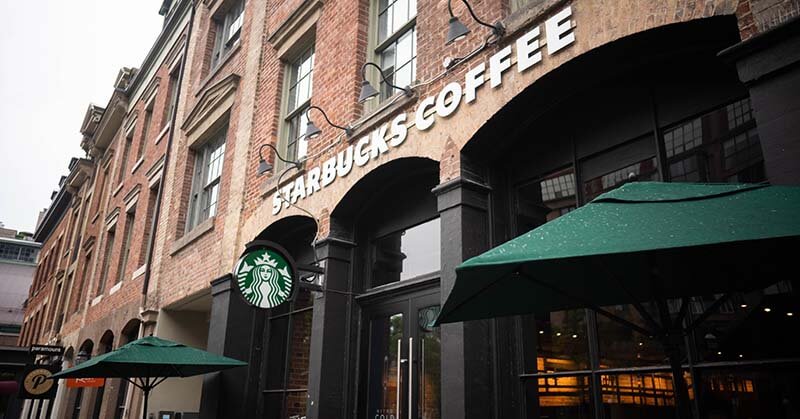
A company is not just a member of a single industry but it is a part of an ecosystem that crosses a wide range of industries. Despite the coffee chain being in the business for more than five decades, Starbucks ecosystem is still in the early stages of its development. When a company has an advanced ecosystem its products and services are highly compatible with each other and customers will miss out on a wide range of benefits and functionalities if they want to break out of the ecosystem. Think Apple or Microsoft. Starbucks has not been able to develop an effective business ecosystem until now partially due to the nature of products and services the company offers. In other words, the global coffeehouse chain offers limited range of products and services it has not been successful in creating compatibility and dependence between products and services. Recognising the importance of having an ecosystem, Starbucks came up with the idea for digital ecosystem in 2020 as part of measures to deal with COVID-19 crisis. Specifically, Seattle-based international coffee chain is attempting to create digital third place, shifting its third place – a place away from home and work value offering to a digital environment.[1] Development of an effective ecosystem comprises the following four stages – pioneering, expansion, authority, renewal or death. [2] These stages relate to Starbucks ecosystem in the following manner: 1. Pioneering stage. The initial stage is associated with the formation of ecosystem. Starbucks ecosystem at this early stage involves initiating global digital community – a community defined by collaboration, experiences, and shared ownership – all centred around Starbucks coffee. 2. Expansion stage. At this stage ecosystem extends to achieve maximum market coverage and critical mass. The world’s largest coffeehouse chain can extend its relevance to integrate art,…
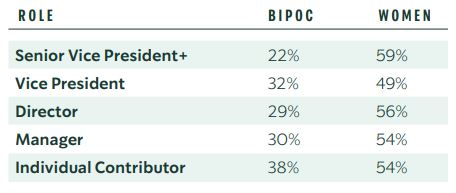
Starbucks CSR programs and initiatives are led by Michael Kobori, chief sustainability officer for the world’s largest coffeehouse chain. CSR initiatives for Starbucks cover wide range of business aspects and employee relationships such as supporting local communities, educating and empowering workers, gender equality and minorities, energy and water consumption, waste reduction etc. CSR Programs and Initiatives Starbucks Supporting Local Communities Starbucks Community Store program aims to assist local non-profit organizations in their efforts to provide education and training to achieve poverty eradication for the young segment of population. The company plans to open 100 Community Stores by the end of 2025. Starbucks has cooperated with non-profit organizations, community leaders and organizational stakeholders to provide more than 520,000 hours of volunteering service around the globe.[1] The global coffeehouse chain runs FoodShare food donation program in all company operated stores in US and Canada. 10.4 million and 1.2 million meals were donated in US and Canada respectively in FY21. Starbucks Educating and Empowering Workers Starbucks College Achievement Plan is an education program that allows employees to obtain online degrees from Arizona State University. Approximately 2500 employees earned their degrees via this program in FY21 alone It has been noted that “at the height of the global financial crisis, when other companies were cutting HR costs wherever they could, Starbucks invested in staff training, including coffee tastings and courses that ultimately qualified for credit at higher education institutions”[2] In FY21 the company oversaw more than 136000 course enrolments in Starbucks Coffee Academy and more than 55,000 course completions since launch. Starbucks and Gender Equality and Minorities At present about 40% of Starbucks US employees are minorities and 65% are women. Among vice presidents, 48% are women and 15% are minorities. The global coffeehouse chain aims to achieve at least 30% BIPOC…
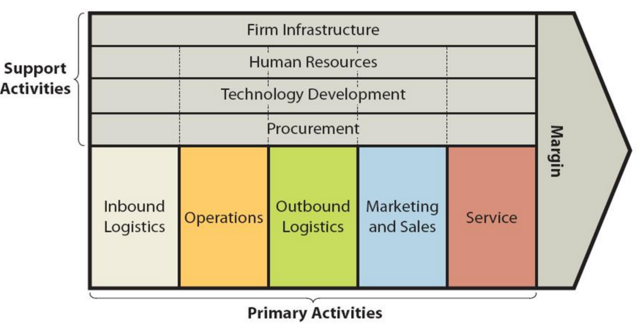
Starbucks value chain analysis is an analytical framework that assists in identifying business activities that can create value and competitive advantage for the global coffeehouse chain. Figure below illustrates the essence of value chain analysis. Starbucks Value chain analysis Starbucks Primary Activities Starbucks Inbound logistics Starbucks inbound logistics and supply chain was subjected to a dramatic restructuring in 2010 after Howard Schultz had returned to the role of CEO for the second time. The restructuring initiative of Starbucks inbound logistics involved simplification of supply-chain management and the creation of a single, global logistics system. Unroasted Arabica coffee beans are brought from Asia, Africa and Latin America to the US and Europe in containers via sea. Also, the coffee chain purchases green coffee beans from multiple coffee-producing regions around the world. These are delivered to one of the following regional roasting plants and distribution centres: Kent Flexible Roasting Plant – Kent, Washington. Augusta Roasting Plant – Augusta, Georgia. Sandy Run Roasting Plant – Gaston, South Carolina. York Roasting Plant and Distribution Center – York, Pennsylvania. Evolution Fresh Juicery – Rancho Cucamonga, California. Coffees are roasted and packaged and taken to dozens of central distribution centres around the globe. Along with coffees from regional distribution centres, central distribution centres also receive deliveries from vendors for a wide range of products starting from coffee machines to napkins. Central distribution centres make more than 70,000 deliveries per week to Starbucks 25,085 stores located in 75 countries.[1] The world’s largest coffeehouse chain also grows its own coffee. Since 2013 Starbucks has its first own 240-hectar coffee farm in PoasVolacno, Costa Rica.[2] Such a shift in the sourcing of products can increase the effectiveness of new product development initiatives for the business as the company will have a chance of experimenting with developing new sorts of…

Porter’s Five Forces analytical framework developed by Michael Porter (1979)[1] represents five individual forces that shape the overall extent of competition in the industry. Starbucks Porter’s Five Forces are represented in figure below: Porters Five Forces Threat of new entrants in Starbucks Porter’s Five Forces Analysis Threat of new entrants in international coffee chain industry is low. The following factors reduce the threat of new entrants for Starbuck’s industry within Porter’s Five Forces. 1. Market saturation. Coffee chain market is highly saturated and more so in developed countries. Market saturation implies an increase of a market share for a specific coffee house at the expense of a competitor. New entrants into the coffee house chain business find such a reality discouraging to enter the business and achieve long-term growth. 2. Access to distribution channels. New market entrants are going to face significant issues to access distribution channels because potentially attractive locations for coffee stores are already occupied by coffee chains, restaurants and retail outlets. It took Starbucks 36 years to reach its current status that comprises total more than 33800 company operated and licensed stores.[2] Similarly, other major players such as Costa, Caribou Coffee,McDonald’s, Dunkin Donuts, Pret-a-Manger have secured thousands of advantageous locations during the decades of operations. 3. Economies of scale. Establishing coffee house chains requires massive capital investments. It can prove to be highly challenging to secure investment to establish new business in this industry unless the business plan is based on previously untapped value proposition. Bargaining power of buyers in Starbucks Porter’s Five Forces Analysis Bargaining power of Starbucks buyers is significant. The following considerations need to be taken into account in this regard: 1. Abundance of choice. Customers can choose from a wide range of established coffee chains as well as local specialty coffee…

Starbucks marketing communication mix consists of communication channels to communicate the marketing message to the target customer segment. The most popular channels discussed below are print and media advertising, sales promotions, events and experiences, public relations and direct marketing. Starbucks Print and Media Advertising Starbucks advertising expenses totalled USD305.1 million, USD258.8 million and USD245.7 million in fiscal 2021, 2020 and 2019, respectively.[1] Print and media advertising represents the core of Starbucks marketing strategy and advertisements attempt to associate Starbucks brand with the superior quality and pleasing experience. Accordingly, messages communicated by Starbucks to the target customer segment via print and media advertising include the following: “Beware of Cheater Coffee. It Comes with a Price” “If Your Coffee Isn’t Perfect, We’ll Make It Over. If It’s Still Not Perfect Make Sure You Are in a Starbucks” “Starbucks or Nothing. Because Compromise Leaves Really Bad Aftertaste” Starbuck began to use social media and viral marketing much earlier than the majority of its competitors with the positive implications on the volume of its sales. Starbucks large social media campaign was launched back in 2009, when US-based customers were offered a free pastry via social media if they purchased a drink before 10:30 am. The marketing initiative announced via social media attracted about one million customers.[2] Noteworthy social media marketing campaigns launched by Starbucks include tweet @tweetacoffee, Blonde Roast, Pumpkin Latte, #TreatReceipt and others. Moreover, social media is adapted by Starbucks as an effective communication channel with customers to develop new products taking into account customer preferences and opinions. The global coffeehouse chain also uses celebrity endorsement as part of its print and media advertising extensively. The list of celebrities who promoted Starbucks include, but not limited to Taylor Swift, Ariana Grande, Rocky Lynch, Jamie Grace, Idina Menzel and Michael Bubble. Starbucks Sales…
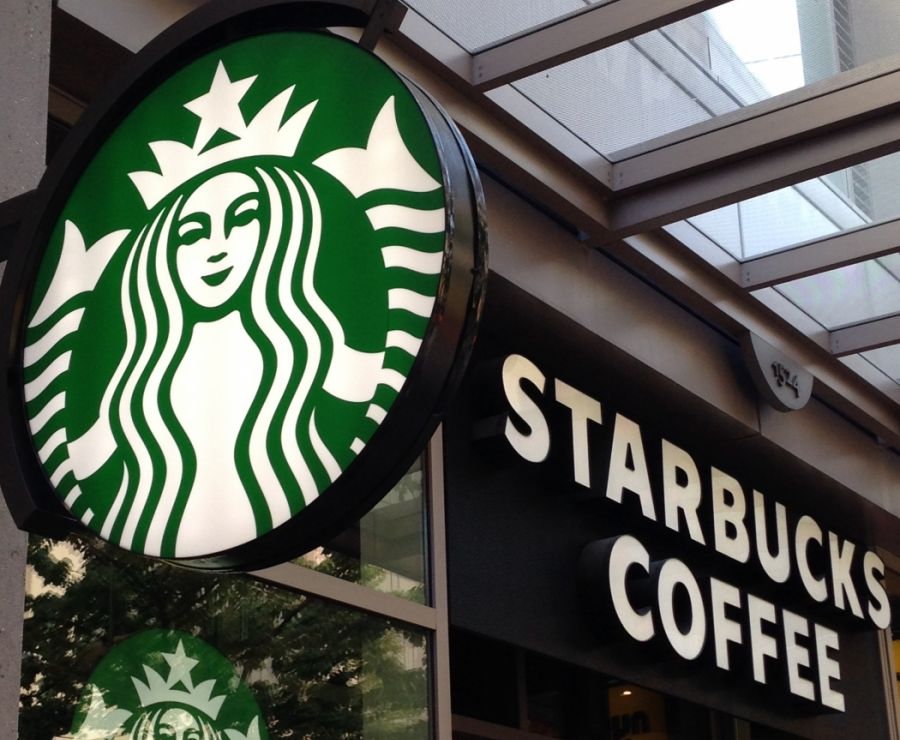
Starbucks 7Ps of marketing comprises elements of the marketing mix that consists of product, place, price, promotion, process, people and physical evidence as discussed below in more details. Product Element in Starbucks Marketing Mix (Starbucks 7Ps of Marketing) Starbucks sells coffee, tea and other beverages and a variety of fresh food items, including snack. In addition to its flagship Starbucks Coffee brand, the company sells products and services under the following brands: Teavana, Seattle’s Best Coffee, Evolution Fresh, Ethos, Starbucks Reserve and Princi. The global coffeehouse chain also sells merchandise products such as coffee- and tea-brewing equipment, Verismo® System by Starbucks, mugs and accessories, packaged goods, books and gifts. Starbucks products are known for high quality. Coffee is the main product sold by company and it sells more than 30 blends and single-origin premium coffees. Place Element in Starbucks Marketing Mix (Starbucks 7Ps of Marketing) Starbucks operates in 84 markets globally and its products can be purchased from the following places: 1. Company-operated stores. There were 17133 company-operated stores, which accounts for about 51% of total numbers of stores by the end of fiscal 2021.[1] Almost all company-operated stores are leased. Starbucks company-operated stores are usually located at high-traffic, high-visibility locations 2. Licensed stores. There were 16700 licensed Starbucks stores by the end of fiscal year 2021, representing about 49% of total numbers of stores.[2] The world’s largest coffeehouse chain offers customers the possibility to order online or through mobile app. Customers can explore the menu, customize their order according to their tastes and preferences and find nearest store location to collect their order. 3. Grocery and foodservice accounts. The world’s largest coffee retailer also sells its products via global leading supermarket chains such as Walmart, Tesco, Sainsbury’s and others. Only the most popular products such as Starbucks Espresso…
